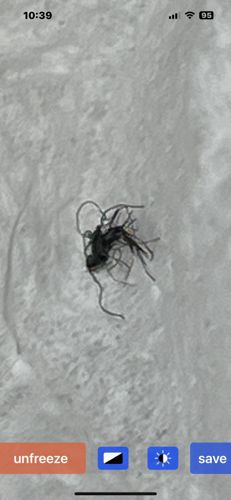Mosquito (likely a member of the Culicidae family)
Scientific Name: Too difficult to determine definitively from the image, as many species exist within the family Culicidae (e.g., Aedes, Culex, Anopheles). A specific species cannot be identified.
Order & Family: Order: Diptera, Family: Culicidae
Size: Typically 3 mm to 9 mm (0.1 to 0.35 inches) in length, though size can vary by species.

Natural Habitat
Mosquitoes are found globally, except in Antarctica. They thrive in environments with standing water for breeding (e.g., ponds, swamps, containers, clogged gutters) and tend to stay in areas with abundant vegetation for shelter.
Diet & Feeding
Adult males primarily feed on nectar and plant juices. Adult females also feed on nectar but require blood meals from vertebrates (including humans, birds, and other mammals) to obtain proteins and nutrients necessary for egg development.
Behavior Patterns
Mosquitoes are crepuscular or nocturnal, meaning they are most active during dawn, dusk, or night. Males typically feed on plant nectar, while females feed on nectar and blood, which is essential for egg development. They can detect carbon dioxide, body heat, and certain chemicals to locate hosts. Breeding often occurs in standing water.
Risks & Benefits
Risks: Mosquitoes are significant vectors for numerous diseases worldwide, including Malaria, Dengue Fever, Zika Virus, West Nile Virus, and Chikungunya. Their bites cause itchy welts. Benefits: In their larval stage, they can be a food source for aquatic animals. Adult mosquitoes can serve as pollinators for certain plants, though their primary ecological role is often debated given their disease transmission capabilities.
Identified on: 8/26/2025